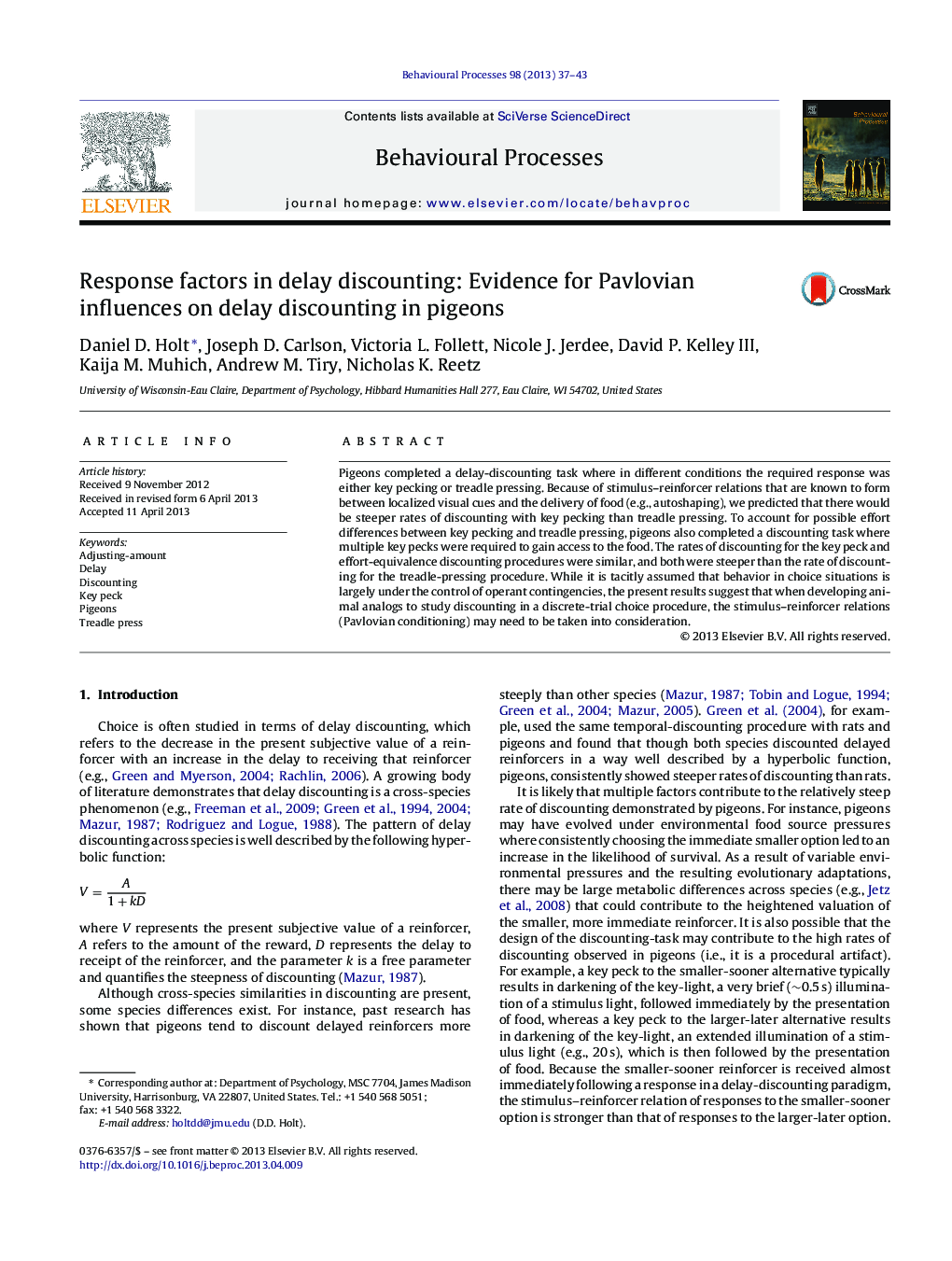| Article ID | Journal | Published Year | Pages | File Type |
|---|---|---|---|---|
| 2426802 | Behavioural Processes | 2013 | 7 Pages |
•Pigeons demonstrated discounting in both the key peck and treadle press conditions.•Pigeons demonstrated steeper discounting during the key peck condition than in the treadle press condition.•Pigeons still demonstrated steeper discounting in the key peck response condition after controlling for effort.
Pigeons completed a delay-discounting task where in different conditions the required response was either key pecking or treadle pressing. Because of stimulus–reinforcer relations that are known to form between localized visual cues and the delivery of food (e.g., autoshaping), we predicted that there would be steeper rates of discounting with key pecking than treadle pressing. To account for possible effort differences between key pecking and treadle pressing, pigeons also completed a discounting task where multiple key pecks were required to gain access to the food. The rates of discounting for the key peck and effort-equivalence discounting procedures were similar, and both were steeper than the rate of discounting for the treadle-pressing procedure. While it is tacitly assumed that behavior in choice situations is largely under the control of operant contingencies, the present results suggest that when developing animal analogs to study discounting in a discrete-trial choice procedure, the stimulus–reinforcer relations (Pavlovian conditioning) may need to be taken into consideration.
